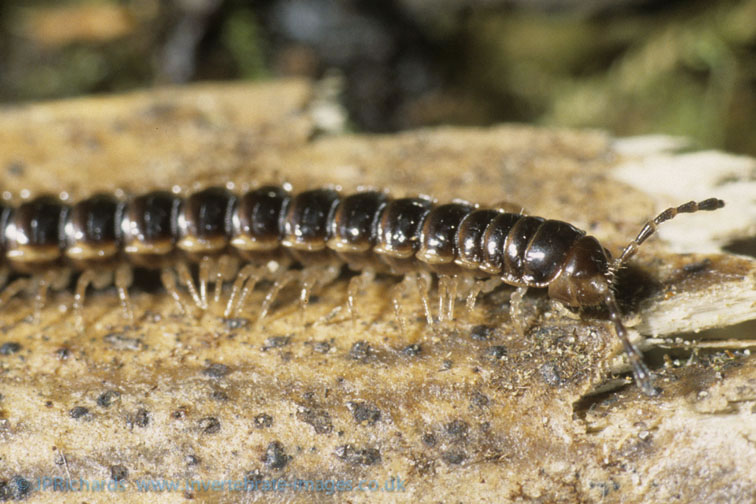Oxidus gracilis (C.L.Koch, 1847)
Status:
GB IUCN status: Not applicable (non-native)
ID Difficulty
Identification
Adults are usually quite distinctive, being very dark (almost black) and shiny with contrasting pale paranota. Immatures are pale brown. Confusion is possible with Stosatea italica - an outdoor millipede.
Distribution and Habitat
At the present time this species appears unable to survive outdoors in Britain and Ireland. However, it is well established in nurseries and botanic gardens across Britain and is also known from two locations in Ireland. It was probably originally a native of East Asia (Blower, 1985) but is now found throughout the tropics where it survives outdoors and in many temperate regions, including the whole of Europe, where it may be found in glasshouses, gardens and adjacent compost heaps. Causey (1943) reported that clutches of eggs may be laid throughout the year and animals may take as little as five months to reach maturity at a temperature of 22 C. In addition to the established populations it is often recorded as a vagrant in pot plants in garden centres and commercial and domestic premises.
This species account is based on Lee (2006).
Links
MilliBase - Global catalogue of Millipedes: https://millibase.org/aphia.php?p=taxdetails&id=946137






